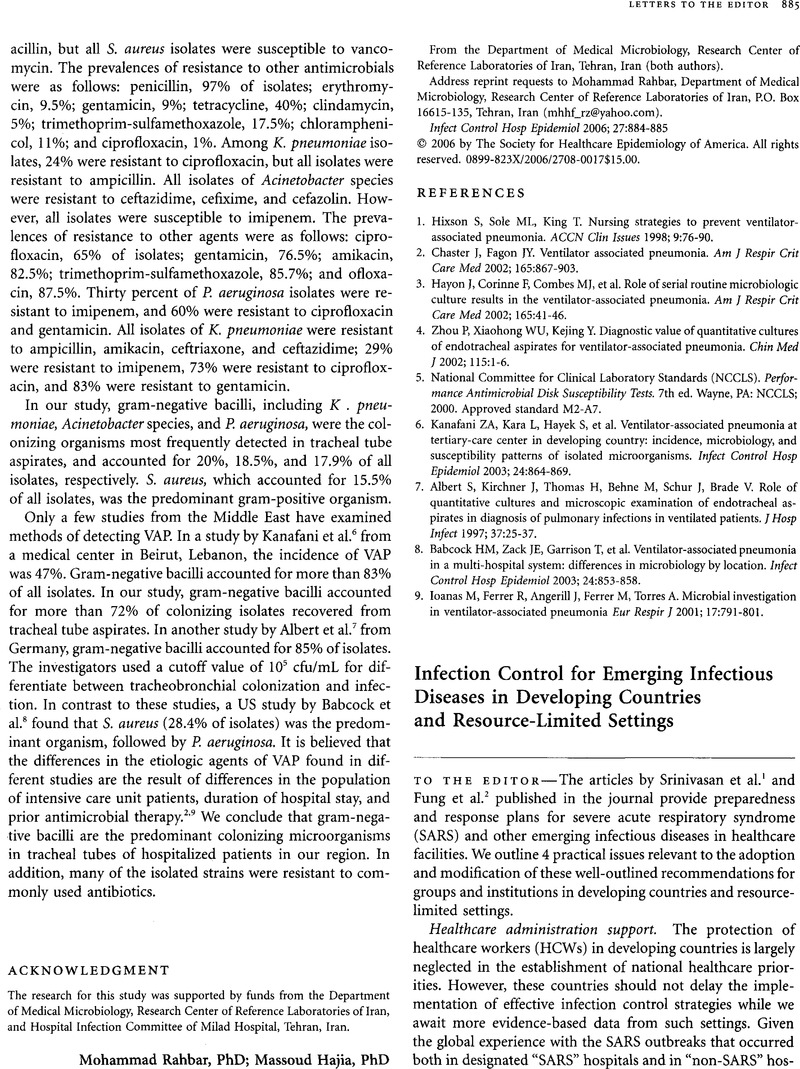Crossref Citations
This article has been cited by the following publications. This list is generated based on data provided by Crossref.
Apisarnthanarak, A.
Warren, D. K.
and
Fraser, V. J.
2007.
Issues Relevant to the Adoption and Modification of Hospital Infection-Control Recommendations for Avian Influenza (H5N1 Infection) in Developing Countries.
Clinical Infectious Diseases,
Vol. 45,
Issue. 10,
p.
1338.
Pilsczek, Florian H.
2009.
Infection control in developing countries: Phnom Penh and Kabul.
American Journal of Infection Control,
Vol. 37,
Issue. 1,
p.
81.
Guo, Xiaojun
Liu, Sifeng
Wu, Lifeng
Tang, Lingling
and
Nishiura, Hiroshi
2014.
Application of a Novel Grey Self-Memory Coupling Model to Forecast the Incidence Rates of Two Notifiable Diseases in China: Dysentery and Gonorrhea.
PLoS ONE,
Vol. 9,
Issue. 12,
p.
e115664.
Suwantarat, Nuntra
and
Apisarnthanarak, Anucha
2015.
Risks to healthcare workers with emerging diseases.
Current Opinion in Infectious Diseases,
Vol. 28,
Issue. 4,
p.
349.
Weber, David J.
Rutala, William A.
Fischer, William A.
Kanamori, Hajime
and
Sickbert-Bennett, Emily E.
2016.
Emerging infectious diseases: Focus on infection control issues for novel coronaviruses (Severe Acute Respiratory Syndrome-CoV and Middle East Respiratory Syndrome-CoV), hemorrhagic fever viruses (Lassa and Ebola), and highly pathogenic avian influenza viruses, A(H5N1) and A(H7N9).
American Journal of Infection Control,
Vol. 44,
Issue. 5,
p.
e91.
Lee, Joon Kee
and
Jeong, Hye Won
2020.
Rapid expansion of temporary, reliable airborne-infection isolation rooms with negative air machines for critical COVID-19 patients.
American Journal of Infection Control,
Vol. 48,
Issue. 7,
p.
822.



